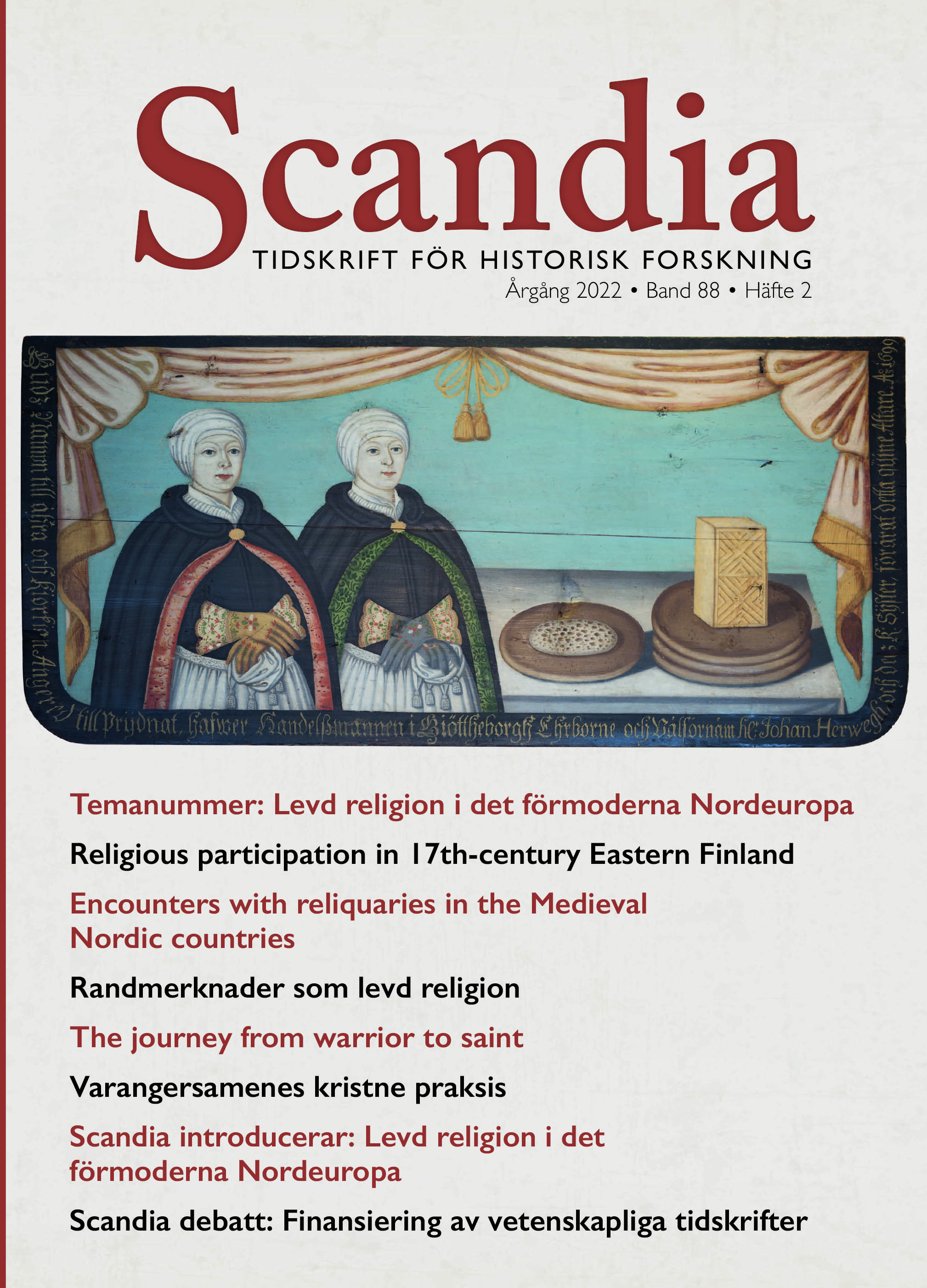Religious participation in the local communities of 17th-century Eastern Finland
DOI:
https://doi.org/10.47868/scandia.v88i2.24799Keywords:
lived religion, 17th century, peasantry, Lutheran Church, FinlandAbstract
In recent years, the perspective of lived religion has drawn attention toward the everyday religious practices of the laity. In early-modern Europe, the realm of the sacred could be approached in different ways from within the mundane world, and religious practices were tightly intertwined with social life. In local communities, religious ideas and practices taught by the church in varying ways intermingled with traits from local religious traditions. This article examines the different ways of religious participation available to the rural inhabitants of late 17th century Eastern Finland, a part of the kingdom of Sweden during the early modern era. Applying the concept and approach of lived religion, the article analyses how Eastern Finnish peasants adjusted their religious practices to their individual circumstances. The article also examines different kinds of interaction and influences affecting the choices of the laity in the sphere of religion. The article is based on surviving court and visitation records from the province of Savo, a rural area where distances between households were often large and many people had to travel a long way to reach the nearest church. It is in the article emphasized that while physical distances and other factors such as infirmity could restrict one’s ability to participate in religious activities at the parish church, the laity had different kinds of practices to choose from and they even created ways of religious participation for themselves. Religious practices could include participating in household feasts on holy days or bringing offerings to a devotional site near the household or in the forest. It is argued that while there were many traditional elements in the sphere of religion passed on to following generations, people also adopted and adapted new ideas in their everyday religious lives.





